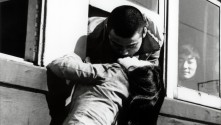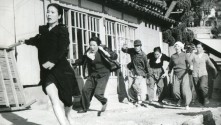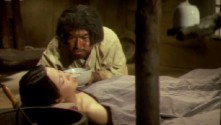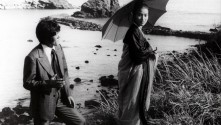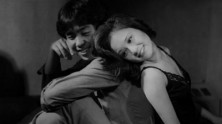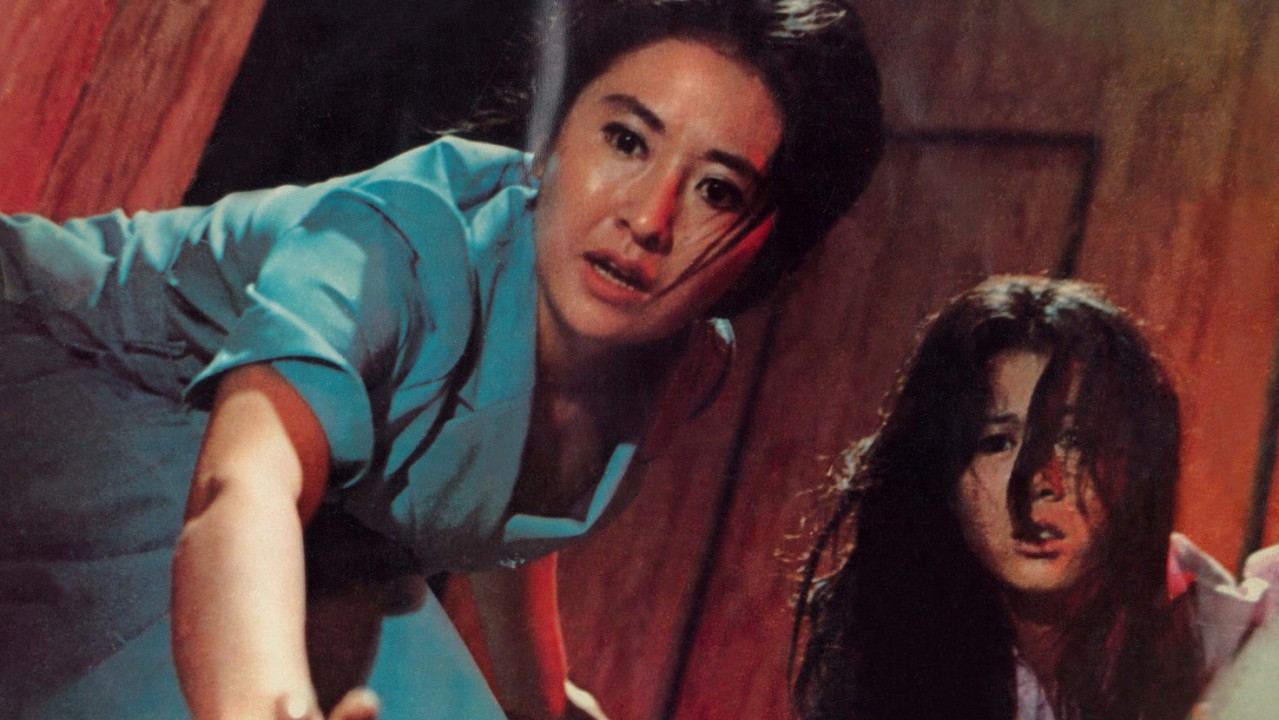
Ha Gil-Jong and the Revitalization of the Korean Cinema
Like all forms of art, the film that does not recognize people or human endeavor is completely false. It is the same with government.
Ha Gil-Jong (1941-1979) was one of the major Korean artists of the 1970s, a dark, brutally oppressive yet absolutely formative period in South Korean cultural and intellectual history. Equally gifted as a poet and writer as he was as a filmmaker, Ha introduced a new sensibility and sophistication into Korean cinema at a moment when the Chungmuro (the Seoul home to the major production companies) industry seemed, to many, to have utterly stagnated. Ha’s distinct artistic vision was strikingly announced by his first feature, The Pollen of Flowers, which drew openly and unexpectedly from traditions of the European art film, surrealism, symbolist poetry and popular Korean film genres. While Pasolini’s Teorema (1968) clearly echoes throughout The Pollen of Flowers’ feverish huis-clos narrative about a handsome wraithlike stranger systematically bewitching each member of an incestuous household, Ha’s film also creatively engages the mode of “grotesque melodrama” pioneered by his maverick elder Kim Ki-Young. A savage study of sexual deviancy and sadomasochism, The Pollen of Flowers ignited a firestorm of controversy, simultaneously announcing Ha as a radical visionary, an icon for critics and young audiences alike, and a dangerous subversive to be viciously policed by government censors. All of Ha’s films would, indeed, suffer extreme censorship and be severely altered from his intended final versions. Ha’s bitter struggles to maintain artistic freedom are legible in the deep scars that wound, yet never fully compromise, his seven completed films, poignantly embodying the imperiled status of the artist and intellectual in Korea during the repressive Park Chung-Hee dictatorship.
Orphaned as a child by the early death of both parents, Ha was driven by a fierce sense of self-reliance and a close bond with his siblings, especially his younger brother Ha Myung-Joong, who would later become a prominent actor and star in Ha Gil-Jong’s first films. The winding path that ultimately led Ha to cinema began with his undergraduate studies in French Literature at the prestigious Seoul National University, an important meeting place for many of the artists and intellectuals who would become South Korea’s most outspoken dissident voices. Ha’s love of poetry grew only more ardent as he discovered the works of Rimbaud, Baudelaire and Apollinaire, poets he would cherish and frequently reference throughout his films. A year into his studies Ha was swept into the April Revolution, the civilian and student-led protest movement that successfully overthrew the anti-Communist strongman Rhee Syngman, giving way to Korea’s first and only parliamentary government, which in turn was swiftly overthrown, a mere eight months later, by a military coup led by Park Chung-Hee. The exhilarating yet tragic experience of the April Revolution would profoundly shape the political consciousness and imagination of Ha and his generation, resonating deeply within Ha’s films in the recurrent figure of a helpless and defeated antihero.
While increasingly dedicating himself to poetry—self-publishing the now-classic volume A Past Principle for the Womb—Ha also forged plans to leave Korea, securing a job at Air France in order to move briefly to Paris at a time when it was difficult for average South Koreans to travel abroad. From France, Ha set out for the US and found his way to the Film Studies program at the University of California, Los Angeles, receiving an MA for his thesis “An Essay on the Poetic Tendency in Documentary Film,” a project influenced by his time as teaching assistant to legendary British documentarian Basil Wright. Ha stayed on at UCLA to complete an MFA in film, studying alongside classmates Francis Ford Coppola and Jim Morrison, and making a name for himself with a series of avant-garde shorts. His thesis film The Ritual of a Soldier won him a coveted award and job offer from MGM, which Ha refused. Unhappy in a country where he experienced frequent racism, Ha returned to Korea and immediately rejoined the now-expanded circle formed by his artist and intellectual friends.
Upon his return Ha joined forces with likeminded critics and filmmakers including Lee Jang-Ho and Kim Ho-Seon to found the Young Sang Sidae (Visual Era) group, a collective centered around a short-lived and eponymous publication (1975-78) dedicated to critically reviewing and engaging contemporary films. Led by Ha, the collective of writers and directors also regularly screened and discussed avant-garde cinema and dedicated itself to inventing creative new ways to give authentic cinematic voice to their generation, despite the pressure to compromise exerted by the motion picture industry and censorship authorities. Inspired by the Nouvelle Vague and the New American Cinema, Ha championed an auteurist idea of art cinema unheard of in Korea’s commercially orientated film industry. Ha, moreover, argued for a mode of cinema urgently engaged with its contemporary moment and set in opposition to the stagnant mainstream, not simply through subject matter, but through film language itself, which he felt needed to be constantly reinvented. The purest expression of the collective’s spirit is found in the early films of Ha, Lee and Kim Ho-Seon and their similar embrace of experimental techniques to inject a new urgency into their explorations of contemporary youth and urban life. An especially vivid expression of the Young Sang Sidae spirit is Ha’s best-known film March of Fools, a critical-yet-affectionate portrait of drifting university students that unexpectedly became Ha’s first commercial hit.
Unfortunately the success of March of Fools raised the stakes dangerously for Ha, with his next two films, the daring folktale The Ascension of Han-Ne and his romantic comedy I am Looking for a Bride meeting fierce resistance from the censors and a puzzled reception by critics and industry producers who demanded youth-oriented films and refused to green-light any future projects. Desperate for work, Ha accepted the entreaties of veteran producer Hwang Gil-Song to direct a sequel to Lee Jang-Ho’s popular Heavenly Homecoming to Stars, finding consolation in Hwang’s hiring of the source novel’s writer, and Ha’s friend, Choi In-Ho, in addition to famed cinematographer Chung Il-Sung. After the tremendous success of Heavenly Homecoming to Stars 2, Hwang pressured Ha to direct an additional sequel, this time to his own March of Fools, and Ha reluctantly signed on, making what would be his last work, Byung-Tae and Young-Ja. Already a hard drinker, Ha drowned his frustrations in alcohol, triggering the brain aneurysm which that would take his life at the early age of thirty-eight, just as the censored version of Byung-Tae and Young-Ja was opening to great acclaim in Seoul theaters. Just before he died, Ha recalled attending a public screening of his last film and bursting into tears as he recognized his own lost youth in his stubbornly innocent characters.
Ha has been remembered and revered by many as a tragic figure, a Jean Vigo of the Korean cinema, a youthful artist who emerged sui generis to shatter taboos and invent bold, poetically inspired cinematographic forms before his sudden death. Yet the mythologization of Ha as a romantic figure risks undercutting his deeply principled and political mode of filmmaking and the ways his films strategically engaged in a clear yet complex dialogue with their contemporary moment. In this way, for example, Ha’s first two films—The Pollen of Flowers and Vow of Chastity, AKA Her Fidelity
—can be taken as a richly ambiguous allegorical diptych, each a portrait of a closed community ruled by a tyrannical male who treats with special cruelty the women he reduces to sexualized objects to be abused and discarded. One can, and should, read in these films strong critiques not only of the Park Chung-Hee dictatorship but also of Korea’s troubled and deep history of systematic misogyny. Such pointed yet symbolically nuanced interventions recur throughout all of Ha’s films as expressions of the politically astute art cinema that remains his greatest legacy, resonating in Korean cinema today, in the work of such directors as Lee Chang-Dong and Bong Joon-Ho.
While offering the first US retrospective of the films of Ha Gil-Jong, this program also contextualizes Ha’s work within a larger series of films by his contemporaries, both fellow April Generation filmmakers such as Lee Jang-Ho and Kim Ho-Seon, as well as older directors including Ha’s idols Kim Ki-Young and Yoo Hyeon-Mok. Seen together, these films trace profound shifts across Korean cinema of the 1970s, revealing the emergence of a new political and aesthetic consciousness in Korean filmmakers as they began to reinvent genre and narrative traditions, led by the singular vision and example of Ha Gil-Jong. – Haden Guest


